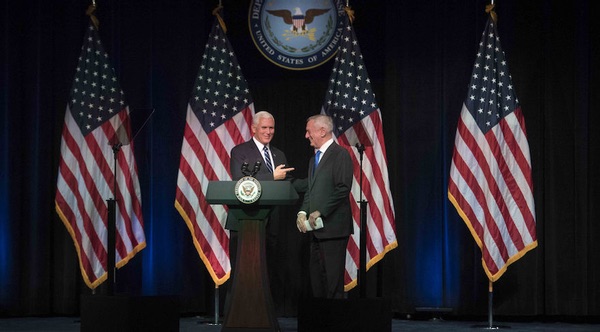A civilian space “guard” is not a military space “force”by Alfred B. Anzaldúa
|
| Despite geopolitical rivalries and tensions, international collaboration is needed to remove or place orbital debris into salvage orbits for later reuse and to manage space traffic for the benefit of all spacefaring countries. However, a warfighting arm of the US government would be hamstrung in this regard. |
If a Space Force can carry out guardianship and protection as well as military tasks, why would the United States need a transparent and civilian Space Guard? To begin with, space issues are international. Dozens of countries have a space program, and 13 countries have already built rockets and launched them into space. Moreover, against a backdrop of a possible ten-fold increase of satellites planned for launch within a decade, approximately 8,000 tons of debris (mostly the result of launches by the Soviet Union or Russia, the United States, and China) is already in orbit, limiting our use of certain orbital bands and threatening current space assets.
Despite geopolitical rivalries and tensions, international collaboration is needed to remove or place orbital debris into salvage orbits for later reuse and to manage space traffic for the benefit of all spacefaring countries. However, a warfighting arm of the US government would be hamstrung in this regard: a military Space Force must maintain military advantage over perceived or potential enemies. That necessity brings with it the requirement to keep secret technological advancements, tactical protocols, and overall military strategy. To maintain its warfighting effectiveness, a US Space Force cannot operate openly and transparently, except in constrained areas with military allies. This secrecy requirement, plus its perceived attack capability, would therefore greatly handicap its ability to help manage international space traffic or remove space threats through international collaborative action.
The National Space Society has not taken a position on whether the United States should establish a military Space Force. However, NSS Policy Committee members have seen the need for organizing the scattered federal space offices into a flexible and responsive entity to deal with the growing challenges of space traffic management, both nationally and internationally. As a result, the committee issued a policy paper in 2017 calling for a transparent, civilian-based US Space Guard (USSG) to carry out this task in coordination with the Department of Commerce and the Department of Defense (DoD).
| A USSG would have a transparent support and facilitation mission, focused on safety for US citizens and their space-related assets. An effective USSF, on the other hand, would necessarily be a warfighting entity with obvious attack capability. |
In its August 2018 policy paper on the same subject, the policy committee offered further recommendations for establishing a USSG in line with the National Space Council’s Space Policy Directive-3 (SPD-3). SPD-3, issued on June 18, directs the Department of Commerce to either manage or cooperate on aspects of space traffic management to foster “continued growth and innovation in the U.S. commercial space sector.” SPD-3 also directly calls for the Department of Commerce to be “responsible for the publicly releasable portion of the DoD [space object] Catalog and for administering an open architecture data repository.” The “open” feature of this data repository allows the sharing of space situational awareness information internationally, while militarily sensitive information can be kept secure by the DoD. Finally, the policy paper also recommended ways the USSG can organize nationally and internationally to clean up orbital debris and protect the planet from near-Earth objects, tasks that Tyson recommended the administration’s proposed Space Force take on.
It is important to understand the divergent missions of the two proposed potential government entities. Both have a protective function. But a USSG would have a transparent support and facilitation mission, focused on safety for US citizens and their space-related assets. An effective USSF, on the other hand, would necessarily be a warfighting entity with obvious attack capability. Its very nature and perceived mission would impede its ability to generate the international cooperation, collaboration, and goodwill needed to promote safety and security in space for the benefit of all humanity.
Note: we are temporarily moderating all comments subcommitted to deal with a surge in spam.
